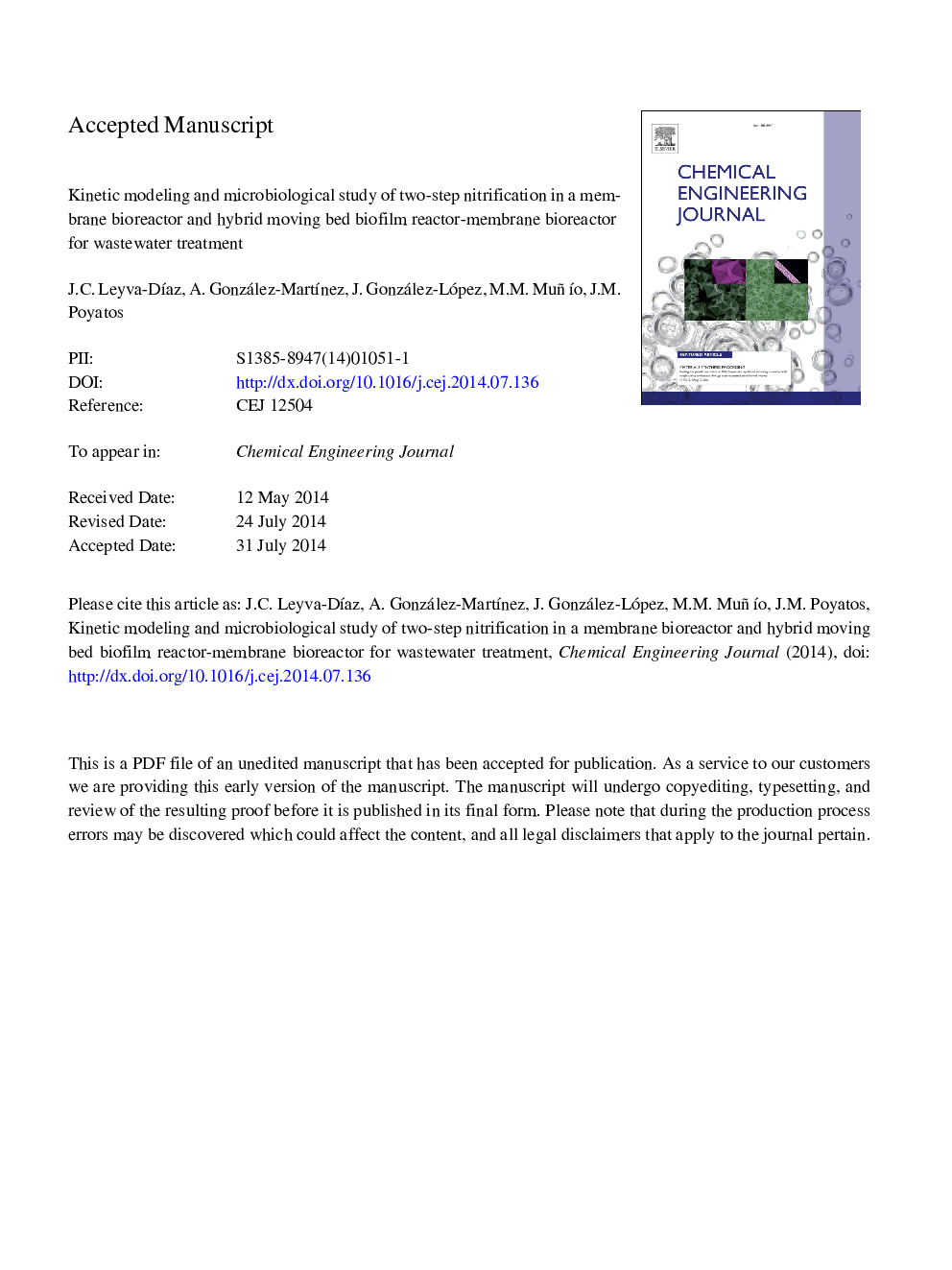| Article ID | Journal | Published Year | Pages | File Type |
|---|---|---|---|---|
| 6585951 | Chemical Engineering Journal | 2015 | 37 Pages |
Abstract
A membrane bioreactor (MBR), a hybrid moving bed biofilm reactor-membrane bioreactor (MBBR-MBR) containing carriers in the anoxic and aerobic zones of the bioreactor and a hybrid MBBR-MBR which contained carriers only in the aerobic zone were used in parallel with the same urban wastewater and compared. The reactors operated with a hydraulic retention time (HRT) of 9.5 h. Kinetic parameters for heterotrophic and autotrophic biomasses, mainly ammonium-oxidizing bacteria (AOB) and nitrite-oxidizing bacteria (NOB), were evaluated and related to organic matter and nutrients removals. The microbial communities of each wastewater treatment plant (WWTP) were analyzed by 454 pyrosequencing methods to detect and quantify the contribution of nitrifying bacteria in the total bacterial community. All three systems showed similar performance in terms of pollutant removal although the hybrid MBBR-MBR containing carriers only in the aerobic zone of the bioreactor (WWTP 3) showed the best performance from the point of view of the kinetics of heterotrophic and nitrite-oxidizing bacteria, with values of μm,H = 0.02665 hâ1, KM = 8.88081 mg O2 Lâ1, μm,NOB = 0.53690 hâ1 and KNOB = 2.16702 mg N Lâ1. It supported the efficiencies of chemical oxygen demand (COD) and total nitrogen (TN) removals and the concentrations of nitrite and nitrate in the different effluents.
Keywords
Related Topics
Physical Sciences and Engineering
Chemical Engineering
Chemical Engineering (General)
Authors
J.C. Leyva-DÃaz, A. González-MartÃnez, J. González-López, M.M. MuñÃo, J.M. Poyatos,
